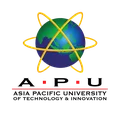
BSc (Hons) Surveying and Mapping Sciences (with Foundation year)

Key facts
| Qualification | Bachelor's Degree |
| Study mode | Full-time, Part-time |
| Duration | 4 years |
| Intakes | September |
| Total estimated cost (local) | $ 45,811 |
| Total estimated cost (foreign) | $ 54,464 |
Subjects
-
Surveying
Duration
4 years
Tuition fees
| Description | Local students | Foreign students |
|---|---|---|
| Tuition fee | $ 45,811 | $ 54,464 |
| Miscellaneous fees | Data not available | Data not available |
| Total estimated cost of attendance | $ 45,811 | $ 54,464 |
| Estimated cost per year | $ 11,452 | $ 13,616 |
Estimated cost as reported by the institution. There may be additional administrative fees. Please contact us for the latest information.
Every effort has been made to ensure that information contained in this website is correct. Changes to any aspects of the programmes may be made from time to time due to unforeseeable circumstances beyond our control and the Institution and EasyUni reserve the right to make amendments to any information contained in this website without prior notice. The Institution and EasyUni accept no liability for any loss or damage arising from any use or misuse of or reliance on any information contained in this website.
Admissions
Intakes
Entry Requirements
- A Level: Must include passes at A2 in at least one subject.
- BTEC: Extended Diploma (QCF) or Diploma (QCF).
- International Baccalaureate: Diploma with 24 points including a minimum of 15 points at Higher Level.
- Other equivalent qualifications accepted by the university.
Note: We would normally expect you to have Grade C in GCSE English and Maths (See below for accepted equivalences)
English Language Requirements:
- Overall IELTS 5.5 with a minimum of 5.5 in Writing and Speaking; minimum 5.5 in Reading and Listening (or recognised equivalent).
Curriculum
You’ll learn the techniques required to produce the reliable spatial data on which all construction tasks depend.
You won’t just be measuring. You’ll be analysing data, presenting it and managing it. And of course re-measuring… just to be sure.
The course involves a range of ways to map geographical features. You’ll learn about land surveying and geodesy, which involves taking into account the earth’s curvature when you are measuring large areas.
Other fields of study will involve photogrammetry – the science of making measurements from photographs – laser scanning, remote sensing, and hydrographic surveying, typically investigating the seabed.
We’ll also introduce you to cadastral surveying, which combines technical and legal knowledge to establish boundaries.
The modules you’ll take include land and construction surveying, legal and regulatory framework, computer programming, data acquisition and 3D modelling, engineering surveying and sea surveying.
Foundation Year
- Mathematics
- Physical Science
- Engineering in Society
Year 1
- Land and Construction Surveying
- Maths and IT in the built Environment
- Introduction to the Built Environment
- GIS & Mapping
Year 2
- Legal & Regulatory Framework
- Computer Programming
- GNSS & Coordinate Reference Systems
- Data Acquisition & 3D Modelling
- Engineering Surveying
Year 3
- Dissertation
- Surveying Project Design & Implementation
- Management & Professional Studies in Geomatics
- Sea Surveying
- Cadastre & Land Management
 +60142521561
+60142521561





